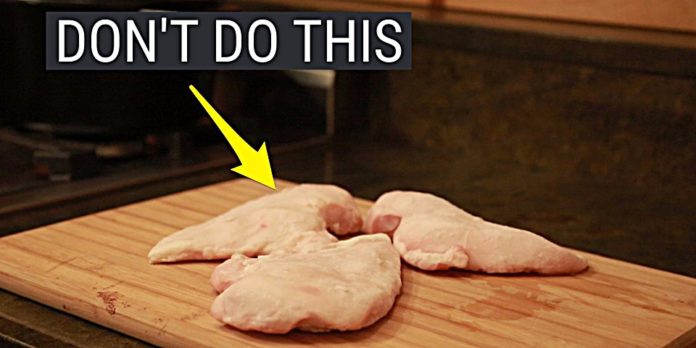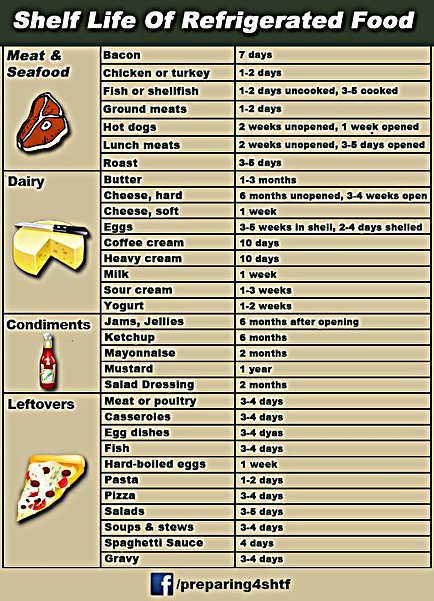Many of us have broken countless food safety rules and have thought nothing of it. There can’t be a thing wrong with eating a slice of cold pizza, right? WRONG! According to the Centers for Disease Control and Prevention, 48 million persons get sick, 128,000 are hospitalized, and 3,000 die from foodborne infection and illness in the United States each year. Many of these people are older adults, age 65 and up with weakened immune systems. Since foodborne illnesses can be serious – or even fatal – you should always exercise safety when it comes to food.
Always use a refrigerator thermometer. In order to ensure that foods stored in your refrigerator remain bacteria-free do invest in a thermometer. Keeping a constant refrigerator temperature of 40 °F or below is one of the most effective ways to reduce the risk of foodborne illnesses. Keep in mind that products stored on the refrigerator door are exposed to the most changes in temperature so make sure to keep eggs, meats, cheeses, highly perishable foods in the rear. Just FYI, during the summer, the temps in your refrigerator tends to sneak up so be very mindful of this. Thermometers don’t have to be fancy schmancy, a simple digital one under $10 will do just fine.
Don’t defrost food on your kitchen counter! Many folks still believe that defrosting foods outside of a cold environment is best. Wrong! As the foods defrost on the counter, bacteria will quickly multiply. If you are in a hurry and need to defrost a food item, use the microwave to do so. You can also defrost meat or poultry in airtight packaging in cold water that you should change every 20 minutes so that the temp remains constant. Use any defrosted food item immediately upon thawing out.
Cutting boards can be dangerous germ havens! You should ideally keep two cutting boards one for raw meats and the other for cooked foods. As a rule of thumb, you should avoid cutting raw meat on a wooden cutting board, and use a plastic one instead. Plastic cutting boards are also less porous than wooden boards, so they are better for handling raw meat. Bacteria can seep into the crevices of the wood and fester, contaminating the surface. ALWAYS wash your cutting boards thoroughly by running both sides under very hot water and scrubbing with dish soap and a sponge. Next, spray a solution of 1 1/2 teaspoons chlorine bleach to one-pint water all over them and let sit for 2 minutes. The disinfecting process will kill all impurities.
A quick rinsing of hands with only water after handling food will make you sick! Hang your heads down in shame! Gotcha! You know you’re guilty of quickly rinsing your hands, sans soap, after handling food. Bacteria in the world are eagerly waiting to make your acquaintance. If you do not want to get introduced to contaminants that can make you very sick, DO make it a practice to use soap and water when washing hands, especially after touching uncooked meats, poultry, fish or eggs.
Stop eating cold leftovers! Think that a cold slice of pizza is safe to eat? Well, think again! The U.S. Department of Agriculture (USDA) highly recommends heating all food that has been previously cooked to 165°F to kill all potentially dangerous bacteria.
Those cookout foods can make you sick! Summer is here, and cookouts are all around us. Meat, poultry, eggs (deviled eggs especially!), sliced fresh fruit, veggies, salads (yes, even green leafy ones), casseroles, you name it, that have been left out more than 2 hours have entered the DANGER ZONE! These foods have had ample time to become a breeding ground for bacteria, and when temps reach 90°F and above outside, food can spoil at accelerated rates. Rather than risk countless trips to the bathroom or the local hospital, throw out foods that have exceeded the two-hour mark. The only foods that are safe past the witching hour are pickles, ketchup/mustard, cakes that don’t contain fresh fruit or whipped cream, and cookies. Sorry!
Many of you don’t know how long foods should be kept in your fridge. Well, check out the compiled chart below that gives you information on how long a food can safely be stored in your fridge before bacteria begins to creep in:












